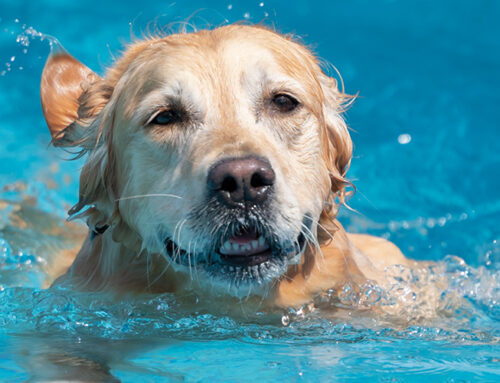Swimming is a fantastic activity for your dog that can enhance their overall health and happiness. Whether you’re thinking of it as a fun hobby or a structured activity with lessons, introducing your furry friend to the water can be a game-changer. This engaging activity isn’t just about fun—it’s about boosting their physical fitness, providing joint relief, and reducing stress. Swimming is suitable for dogs of all ages and breeds, making it a versatile option for any pet parent looking to enrich their dog’s life.
Physical Health Benefits That Swimming Offers Your Dog
Swimming is great for improving your dog’s cardiovascular health. It engages the heart and lungs, promoting better circulation and endurance. This activity helps dogs stay fit without stressing their bodies. Additionally, swimming contributes to muscle building thanks to the natural resistance of water, which strengthens muscles without overexertion. This is especially helpful for older dogs or those with arthritis, as the buoyancy of water eases pressure on their joints, making movement more comfortable.
H2 Mental Health and Behaviour Benefits for Your Dog
Swimming offers notable mental health benefits for your dog, helping to reduce stress and anxiety. The rhythmic motion of swimming can be incredibly calming, allowing your dog to release pent-up energy in a controlled and soothing manner. This activity also promotes better behaviour by providing a productive outlet for energy, which can reduce unwanted behaviours like chewing or excessive barking.
In addition, swimming fosters discipline and focus. As dogs learn to follow commands in the water, they become more attentive and responsive. This can translate into better obedience in other areas of life. Swimming also boosts your dog’s confidence, particularly for those who might be timid or anxious in different settings. The sense of accomplishment they gain from mastering new skills in the water can positively impact their overall demeanour.
Safety Tips for Dog Swimming
Safety is key when taking your dog swimming. Always begin by checking the water temperature to ensure it’s comfortable for your dog. Equip your dog with a life vest, especially if they are new to swimming or still building their confidence. Keep a watchful eye and never leave your dog unsupervised in the water. Look for signs of fatigue, like heavy panting or slowing down, and be ready to help them out of the water if needed. After swimming, rinse your dog off, particularly if they were in chlorinated or saltwater, to protect their skin and coat. Also, make sure to choose safe swimming spots free from sharp objects and strong currents. Proper preparation and vigilance can make swimming a safe and enjoyable activity for your dog.
Getting Started with Dog Swimming Lessons
Introducing your dog to swimming can be a rewarding experience if approached with care and patience. Start by allowing your dog to get used to water in a shallow, controlled setting like a kiddie pool. This initial step helps them feel secure and curious about the water. Gradually move to deeper water, always offering encouragement and treats to make the experience positive.
Professional dog swimming lessons are a great option for those who prefer a structured approach. Trained instructors can provide valuable techniques and ensure your dog learns to swim safely and effectively. If you decide to train at home, consistency and patience are key. Always monitor your dog’s comfort level and never force them into the water.
Regardless of the method, remember to use a life vest and stay close by to assist your dog as they learn. Making the experience fun and positive will help your dog build confidence and enjoy their time in the water.
Selecting Suitable Locations to Take Your Dog Swimming
Finding the right spot for your dog’s swimming adventures is key. Seek out clean, calm waters, like lakes with gentle currents or public pools that welcome dogs. Even your backyard pool can be a great choice. Make sure the area is safe and free from hazards like sharp objects or strong currents. If you opt for public places, ensure they are dog-friendly and adhere to local rules. Always prioritize your dog’s safety and comfort by choosing well-maintained and appropriate locations.






